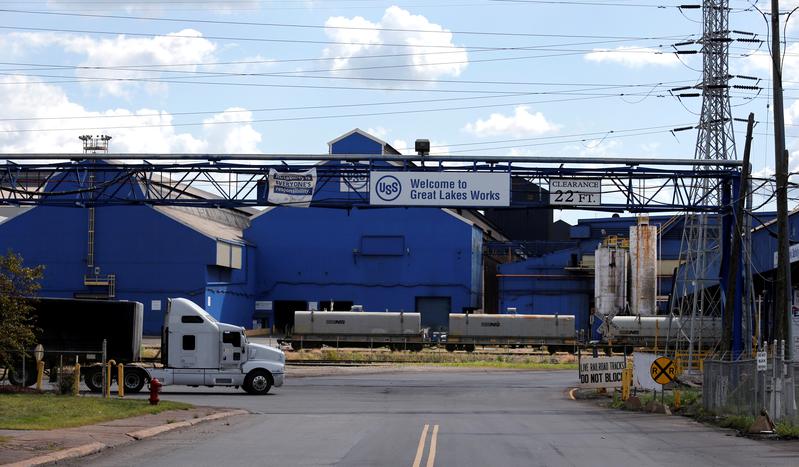Following a year in which US hot-rolled coil prices reached an all-time high, steel industry analysts are expecting 2022 to be a year of normalization and downward pressure as more supply and shorter lead times improve availability for buyers.
“I think the bottom line is in 2021 there was a shortage,” Phil Gibbs, equity research analyst at KeyBanc Capital Markets, said in a recent interview with S&P Global Platts. “Our outlook for next year is looking for some aggressive normalization, particularly in spot pricing as supply has become more available.”
US HRC spot prices entered 2021 rallying, already near an all-time high at $1,009/st, according to Platts pricing data. The price cracked the “grand a band” threshold in the final week of 2020 and surged an additional 94% to an all-time high of $1,960/st in late September.
Price erosion began in the third quarter, though domestic HRC spot prices remained supported above $1,900/st through mid-October before falling 24% from the peak in the final months of 2021.
“The US steel market is now in surplus, unlike having been in a deficit over the past year and a half, and that surplus most likely grows larger next year,” UBS analyst Andreas Bokkenheuser said in a recent interview with Platts.
John Anton, director of pricing and purchasing at IHS Markit, said he expects spot prices for hot-rolled coil to be sharply lower in 2022 compared with the highs of 2021 when sheet prices were triple the 10-year average from 2010-2019. However, while moving lower, US sheet steel prices are still expected to remain elevated in 2022 compared with the historical average, he said.
“Prices are coming down and they are coming down sharply but we still believe the annual average will be 75% higher than that 10-year average,” Anton said.
He said he expects a drop in cold-rolled coil spot prices to lag HRC by two to three months before falling just as sharply.
“I view 2022 as the glass being two-thirds empty, not half empty,” Anton said.
Falling lead times, rising imports pressure pricing
One reason for the expected drop is that domestic lead times have fallen over rising production and a stabilization of demand, a dynamic expected to continue into 2022, analysts from BofA Securities said in the firm’s 2022 Metals and Mining Outlook.
Platts’ lead time average for HRC stood at 3.9 weeks as of Dec. 29, its lowest level since May 2020, and down from an average of 8.5 weeks in July 2021.
The shortage environment in early 2021, as domestic mills were slow to bring back capacity as the economy recovered from the early effects of the pandemic, created a level of mania and panic among steel consumers, Gibbs said.
“I think the automotive guys bought more steel than they ended up needing because they felt like they were going to make up production at some point and that never manifested,” Gibbs said. “All of these things and then pent-up demand after the election, service center restocking … automotive participating aggressively in the first half, all those things that led us up in 2021 are pretty much the same things for the unwinding that will lead us down for 2022.”
Stimulus that was pushed into the market to allow the US to recover from the effects of the coronavirus pandemic is now being tightened again, impacting steel demand expectations for 2022, Bokkenheuser said.
“We’re seeing the [Federal Reserve] tapering and that pent-up demand for steel following Covid stimulus is now fizzling out, so effectively demand growth is decelerating, not just in the US, we’re seeing that all over the world,” he said.
Imports have also been on the rise in the US in late 2021, further pressuring domestic pricing.
“One of the ways [US mills] got away with such high prices is the lack of imports,” Anton said. “There will not be a lack of imports in 2022 so we won’t see the same high pricing.”
Hard environment for the distributors
Falling prices at the mill will be a major concern for distributors in 2022 as they sell off steel purchased at higher prices.
“It’s going to be a hard environment for the distributors particularly to manage through that have a ton of hot-rolled exposure, just because no one ever thought that they would see those type of gains in inventory over the last several months and they have to make sure they’re properly managing through this as best they can,” Phil Gibbs, equity research analyst at KeyBanc Capital Markets, said in a recent interview with S&P Global Platts.
The liquidation factor on inventories is going to be a nice cash draw but from a profit perspective, 2022 is going to be a tough year if distributors aren’t hedged, he said.
“I think there’s been a little bit of a denial for the last several weeks because no one wants to admit the steel they just bought is already somewhat underwater but it was a weird year so you had a lot of weird outcomes to the upside and you probably will have strange outcomes too on the downside,” Gibbs said.
— Justine Coyne, Michael Fitzgerald






